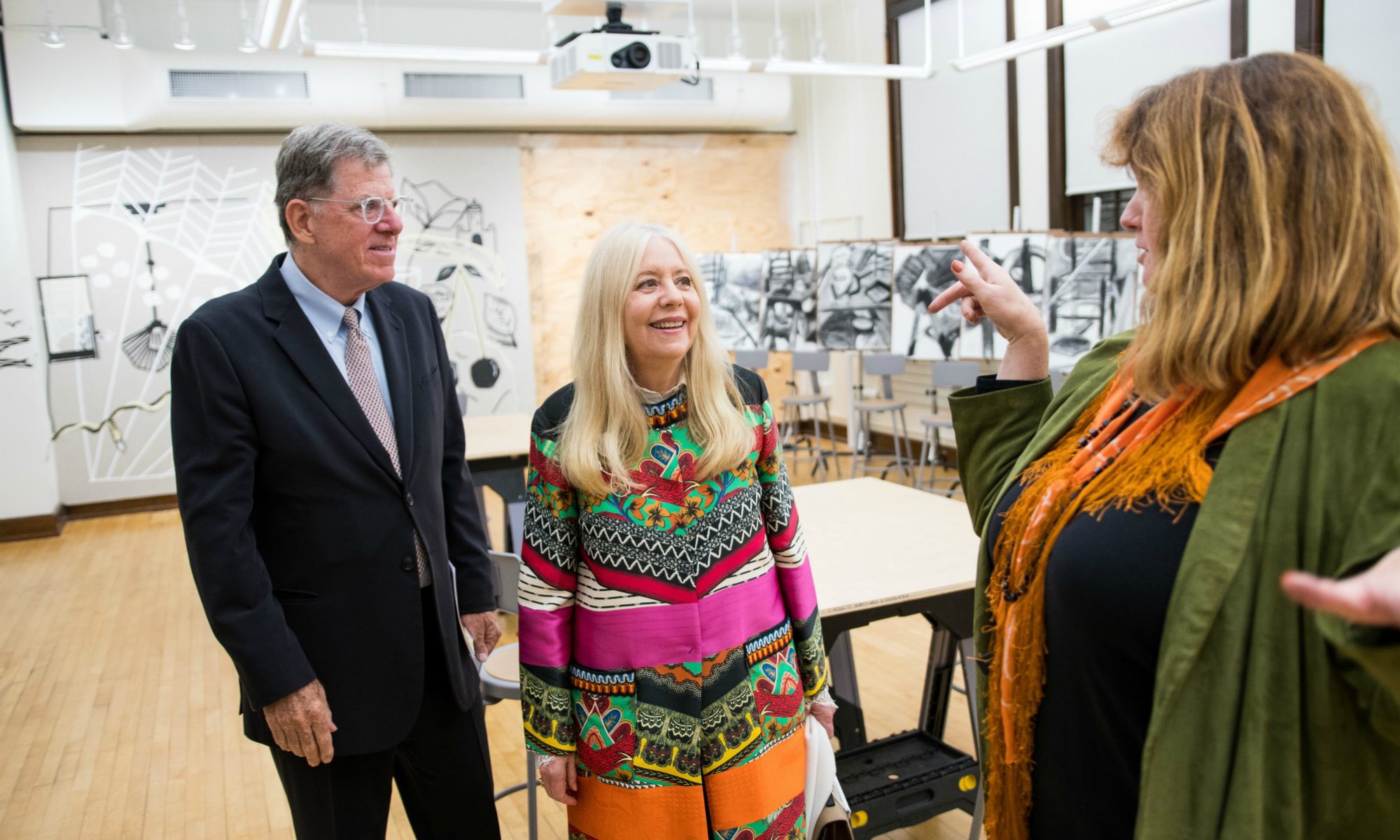Michele Resnick Cohen, UVM ’72, and her husband Martin Cohen, have made several gifts totaling $7 million to transform the Elihu B. Taft School—located at the corner of South Williams and Pearl streets on the edge of campus—into UVM’s first integrated center for the creative arts.
The Cohen’s vision is now a reality – the university formally opened the new Michele and Martin Cohen Hall for the Integrative Creative Arts at a dedication ceremony at the new facility on Wednesday, October 3. The ceremony featured performances and exhibitions by students and faculty from across UVM’s fine and performing arts departments.
“The University of Vermont has a reputation for integrating the arts and humanities broadly across campus, in innovative ways,” said UVM President Tom Sullivan. “Marty and Michele’s generosity provides an exciting new laboratory for these collaborations to take place. The arts bring a special energy and creativity that enhances and enriches other kind of learning at UVM.”
The Cohens tour the drawing studio.
“I hope that this new facility will help students experience the joy and the freedom of art, and all the things that one can express through any medium, regardless of their course of study,” said Michele Cohen. “The arts are an important part of our society—an important part of our humanity—and having a place on campus that brings them together is crucial,” added Martin Cohen.
“Cohen Hall is revolutionary,” remarked College of Arts and Sciences Dean William Falls. “It brings together studios, labs, and teaching spaces for all of the arts in a building that is itself a gallery for showcasing student work in traditional and digital media.”
Kelley Helmstutler Di Dio, professor of art and art history and associate CAS dean, led a working group of faculty, staff and professional partners including the architectural firm Scott & Partners Architecture to complete the project in time for the start of classes this fall.
“There are many studios and art classrooms scattered across campus, but this is the first time we have a space largely dedicated to the fine and performing arts,” she said. “This will offer spaces where students and faculty can develop collaborations across disciplines.”
Cohen Hall for the Integrative Creative Arts features several structural improvements that enhance the building’s functionality and accessibility, including an elevator, new electrical and ventilation systems, and a new parking lot and sidewalks.
On the first floor is a studio art classroom, critique spaces, a gallery space, and an audio recording studio. The second floor includes a digital media lab, production studios, equipment lending for digital art and film classes, and a drawing studio for studio art courses. The building includes several other classrooms where instructors can integrate technology into their instruction.
Exquisite architectural details in the historically significant structure, a 1939 Works Project Administration building, have been thoughtfully preserved. Entering through the main entrance on South Williams Street, visitors see what generations of school children experienced – granite and marble wainscoting, terrazzo floors and high, arched windows providing ample natural light. Now the building will serve college-aged students exploring the disciplines of art, dance, theatre, film, music, television studies and more.
Source: UVM News

